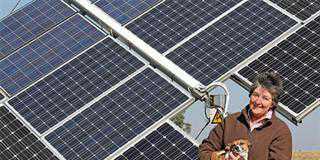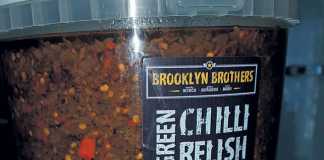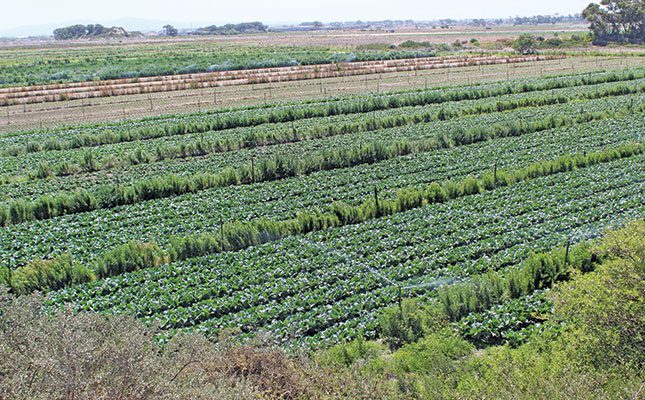
Photo: Lindi Botha
There is a saying that perfectly sums up the caution one should take before starting a new business: “Just because there is a gap in the market does not mean there is a market in the gap.” The same rings true for the myriad options that farmers can exploit to fully utilise their land and expand operations: just because you can, does not mean you should.
Diversification can, however, be a gold mine when approached correctly, and prevent seasonal lulls in income.
“Diversification is about getting the bounce factor – being able to spread risk and ensure there are different income streams should policy changes or market disruptions affect your income in one area,” says Arné Verhoef, chief technology officer at insect protein producer the Nambu Group in the Eastern Cape.
Verhoef has paid his school fees over the years, trying his hand at numerous activities to maximise his income and use of the land.
He learnt a few hard lessons, but also reaped the rewards of making the right matches.
“You name it, I’ve tried it! At times, my fields looked like a complete mess, with all the different crops growing as part of an intercropping system. I don’t understand barren orchards. Why would you not use the land between the trees to grow another crop?”
He finally came to the conclusion that any addition needs to fit into the whole system.
“Look at options where waste from one area can be used in another, or where adding links into the operation increases efficiency. That way, you eliminate waste but also reduce input expenditure. Diversification is about reducing inputs and optimising returns. If it ticks these boxes, then it’s a good option to explore.”
Diversification is a broad term, and the practice can be approached in several ways. Verhoef believes that at the very least, farmers need to rotate their crops.
“If you’re mining the soil, you’re stealing from your children. There are many systems for multicropping that enhance soil health while still intensifying land use. If you simultaneously plant crops that complement each other, then you’ll have more to sell.”
Carrying out an inventory of the farm is a vital first step in deciding whether to diversify or not.
“Diversification is not about spreading yourself thin. It’s about integrating different aspects into what you are already doing,” he says.
This was the approach taken by Hlobisile Yende, director of The Yende and Partners farming company in Heidelberg, Gauteng. The farm consisted predominantly of cattle and grain. But when the water pump was stolen and the grains had to rely on rain, she looked for other additions to her income.

“I wanted a crop that could be rainfed, but for which there was also a stable demand. That was butternuts. I took a risk and planted 1ha. It turned out to be a success, and I yielded 40t/ha,” she says.
There were learning curves involved, which included understanding rain patterns and the best time to plant, as well as different cultivars.
“I didn’t even know there were different cultivars that offered so many different characteristics and I had to do proper research to find the one that suited me best.
“I also quickly realised that there were times where market demand was higher, which meant I had to try to time my harvest to take advantage of these high prices.”
Butternuts were a good choice as they not only made the best use of her limited resources, but she could utilise the manure from her livestock as fertiliser, creating the circular system advocated by Verhoef.
Selecting the right option
Yende’s approach to diversification is to first master one area before moving on to the next. This gives her time to conduct enough research, get to know all the risks that come with each season, and have a full understanding of what it takes to grow a certain product before adding anything new.
After achieving success with the butternuts, she realised that she needed bees to improve production.
“Bees takes care of 75% of the pollination needs for butternut.. Because we also have many bluegum trees, there’s ample food for the bees to keep them on the farm, and make enough honey.”
After evaluating the demand for honey, Yende concluded that by adding this venture she could increase earnings from a bigger butternut crop, as well as from honey sales. Not stopping there, she added a candle-making business to utilise the beeswax.
“I look for the maximum value I can extract from a crop or piece of land. I don’t want to spend more on my farm; I’d rather increase productivity and earn more money.”
Wildlife
Verhoef believes there is much potential in creating wildlife corridors on farms, or planting trees on the fringes. “By making space for conservation of indigenous bushes you aid the natural ecosystem on the farm, which helps to ward off pests and diseases typically created by monocultures.”
These corridors can be used to plant marula or moringa trees, both of which have high value, but require little attention.
“Stocking corridors with game is another option, because most antelopes don’t require much work and live off the veld. Game meat is popular and there’s a growing market for it. You don’t need to breed high-value game to make money from this industry.”
On his own farm, he has a variety of livestock, albeit in single numbers due to limited space.
“Every farmer should have at least one cow. Livestock are so efficient in utilising the land and turning inedible grass into protein. Taking this approach, look at which animals can graze together or coexist; you could have an extensive cattle operation with an intensive sheep component.”
He believes that small-scale farmers should aim for local or niche markets, capitalising on low-maintenance options such as green vegetables, which are always in demand. Larger-scale farmers should look towards expanding their operations, or consider fulfilling the needs of a particular health trend.
“Find your bread and butter first, then the jam. Intensify your operations or complement what is already working by extending production seasons.
“If you don’t have economies of scale, collaborate with those around you to build it together.”
He advises farmers to view technology as a tool to increase efficiency, rather than reduce labour.
“There are a lot of new [products] coming onto the market that could make diversification easier. Look for those that really add value, and could enhance your business on multiple levels.”
Yende cautions against diversifying into components that do not necessarily make the farm better or more efficient.
“Everything you undertake and invest in must be fully functional and able to pay for itself. Don’t consider that which will only make managing the farm more complicated.”
Don’t overdo it!
Dr Obakeng Mfikwe, the owner of KMF Farm Holdings in North West, cautions against the danger of being busy without being productive. The former doctor runs a busy diversified operation that includes broilers, stud cattle, a feedlot and grain production.
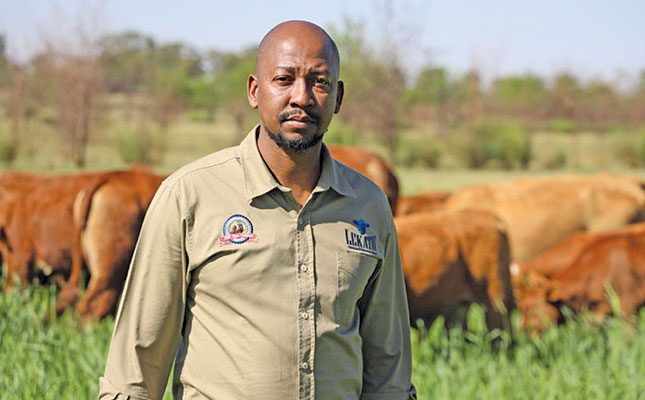
“Don’t try to diversify into too many commodities or you’ll end up being busy with being busy, and you won’t make enough money to justify the hours you put in,” he says.
Mfikwe advises farmers to look for components that complement each other, such as livestock and crops. “The manure feeds the crops and the crops and residues feed the livestock. Choosing commodities that are related is the key to success.”
Juggling many balls at once requires diligence and he warns against getting distracted.
“The youth are easily distracted by so many things. Social media and WhatsApp groups will keep you busy all day and your farm will suffer. Stay off the screen and focus on your farm.”
In the same vein, Verhoef says chasing new schemes and fads is a trap easily laid out for farmers looking to diversify.
“Don’t lend your ear to people selling you bright new plans that require you to give them money. There are many predatory salespeople who will sell you a dream. Look at things objectively and get second and third opinions.”
An example is what he calls ‘the hemp trap’. Many entered this industry in the hopes of making quick returns after cultivation was legalised in 2021. The regulatory environment, however, necessitated significant additional investment that many producers could not afford, leading them to give up their operations.
“Red tape and regulation can keep you busy for a long time. When you choose another component to add to the farm, make sure the regulatory environment and additional administration won’t tie you up.”
Verhoef cautions against loading a farm with so many activities that none of them are able to shine.
“If you chase two rabbits at once you won’t catch one. Understand what it is you want to achieve and keep it simple. And make sure you deliver good quality consistently across the range of products you produce. It won’t help you to diversify but get paid less per product because the quality dropped when you took your eye off the ball.”
Both Yende and Verhoef emphasise how crucial it is to conduct sufficient research before leaving the starting blocks.
“Make sure your bases are covered so that you will still get an income while you’re exploring other options or waiting for them to become profitable. Define what you want to achieve and start small. Carry out trials and fail intelligently by learning from your mistakes,” says Verhoef.
Market demand, he adds, will ultimately determine how profitable a component will be. He relates how he had a lucrative market for calabashes, but it consisted of only one client. When he died, the market disappeared and the crop had to be abandoned.
One step at a time
Limpopo farmer Gene Likhanya advises against ‘going big’ too quickly. He learnt this himself from his macadamia operation.
“Break-even point on a typical macadamia project is around 11 years, even though you can start getting an income from four years onwards. In the meantime, there are constant expenses and the orchard establishment costs are high.”
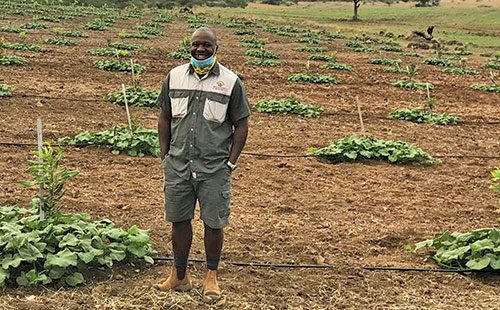
When Likhanya’s cash flow started drying up, he was forced to diversify. He planted butternuts and bananas, both fast-growing crops, between the small macadamia trees, and rented out farming equipment and trucks.
He believes diversification is about risk management. “Not everything on the farm will always go to plan, so you need other options to make up your income.”
It is also important, he adds, to manage expectations and focus on what “keeps the boat afloat” while the farm is growing.
“Understand that things need to be done correctly from the start to achieve success. When you see a commercial farmer’s trees growing better, bigger and yielding more than yours, there’s a reason for that. Do your land preparation properly, don’t take short cuts and research what needs to be done. There are checklists – follow them,” he says.
Likhanya adds that essential to his success has been his mentor’s advice. “This is one of my most valuable ‘assets’. I barely do anything without asking him first. Mistakes are expensive.”
Farmers should also be honest with themselves over why a particular venture might be failing.
“If your product quality is bad, it’s bad. If buyers don’t want to take your crop, it’s not because they are discriminating against you; it’s because your produce is not up to standard. Success depends on producing good quality, according to the specifications, and delivering on time.”
Keep up with trends
Verhoef adds that staying in the know about developing trends and markets is important when trying to identify an investment. Here, podcasts and networking with those in the industries you are interested in can be crucial.
“Get to know what people are talking about so you can see the wave when it’s still a ripple. You can then capitalise on the upswing, and not lose money on the downswing because you acted too late.
“See what has worked for others and learn from their mistakes. If you’re new to an area, speak to your neighbour about the challenges and opportunities in that environment. Look at similar climates around the world and what’s being done there. Seek out alternative ways to solve a problem. When I had a snail problem on my farm, I bought ducks. Now we sell duck eggs too!”
Diversification can offer a lifeline while waiting for a farm to grow, or it can mean an extra layer of fat for an already successful business. The key is to do as much as possible with as little as possible so that profitability and sustainability are ensured.
Contact Arné Verhoef at [email protected], Hlobisile Yende at [email protected], Obakeng Mfikwe at [email protected], and Gene Likhanya on 076 877 1757.









